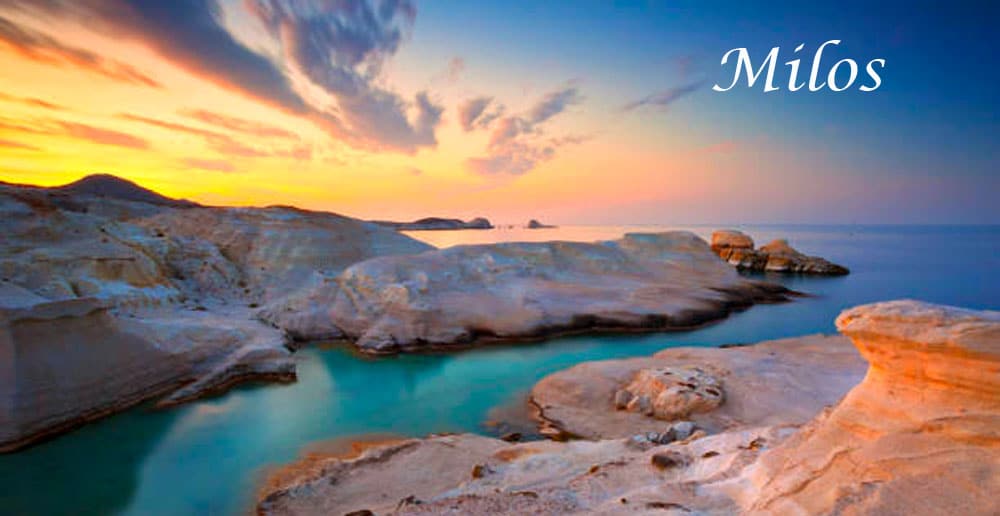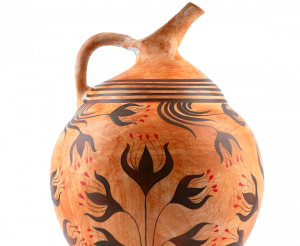History of Milos
Archaeological excavations have revealed that Milos has been inhabited since the Neolithic Age. In fact, it was one of the first islands of the Cyclades to be inhabited.
The island developed rapidly thanks to the obsidian stone found there. It is believed that the Melians prospered in the extraction of minerals from the sulfur mines. During the Bronze Age, the island became the center of Cycladic civilization.
Phylakopi was the most powerful city of Milos, representing three different historical periods. However, the city was abandoned after 1100 BC. and a new city was built in the present village of Klima.
In ancient times, Milos experienced great prosperity due to its mineral wealth. It was already inhabited since the Neolithic era (7000 BC) and soon became richer than its neighboring islands thanks to the obsidian stone, a black volcanic rock that the Melians used in their weapons and tools. It is even believed that they had also gone into export trade, as the obsidian of Milos has been found in the Peloponnese, Crete, Cyprus, and even Egypt.
Since the early years of the Bronze Age (2800-1100 BC), Milos has played a very important role in the Cycladic world, centered on the city of Phylakopi, which has given its name to an entire archaeological period.
After the descent of the Greek tribes, Dorians settled in Milos around 1000 BC. In the same period, a new city by the Melians begins to be built in the area of today’s Klima.
We know very little from ancient sources about Milos before the 5th century BC. However, its inhabitants are among those who refused “land and water” to the Persians and fought alongside the rest of the Greeks in the naval battle of Salamis and the battle of Plataea. However, they and their city were destroyed in 415 BC. by the Athenians, when they tried to maintain their neutrality in the Peloponnesian War.
In the following centuries, Milos followed the fate of the rest of the Cyclades. Until 311 BC. it belongs to Macedonia and then to Egypt. The freedom and safety of the seas, thanks to the powerful fleet of the Ptolemies, gave the opportunity for new economic development of the island, which also contributed to the flourishing of the arts. The famous statue of Aphrodite (Louvre museum) and the imposing Poseidon, 2.50m high. (Archaeological Museum of Athens) are representative examples of this new era.
During the Roman era, Milos was decorated with other works (marble theater), while Christianity also appeared, probably from the 1st century. An irrefutable witness are the Catacombs, the largest in Greece and one of the most remarkable in the world.
During the Hellenistic period, the magnificent statue of Aphrodite was created in Milos, which today is exhibited in the Louvre museum in Paris. The island flourished during the Roman period, when the inhabitants began to move outside the city walls.
However, Milos came under Roman, Venetian and Turkish rule respectively. During the Roman Era, the island was adorned with a marble theater, while in the 1st century Christianity appeared. The Catacombs are created, the largest in Greece and one of the most remarkable worldwide.
In 1207, like all the islands of the Cyclades, it came under the rule of the Venetians until 1580, when the Turks dominated Milos and the Aegean islands in general. At that time, Milos became a stronghold for pirates, who found refuge in its famous caves.
In addition, Milos was one of the Cycladic islands that pioneered the Greek revolution and in 1832 was united with Greece.
During the First World War, the port of Milos was used as a shipyard by the British and French fleets, while the Aegean naval command was housed in Adamantas.

